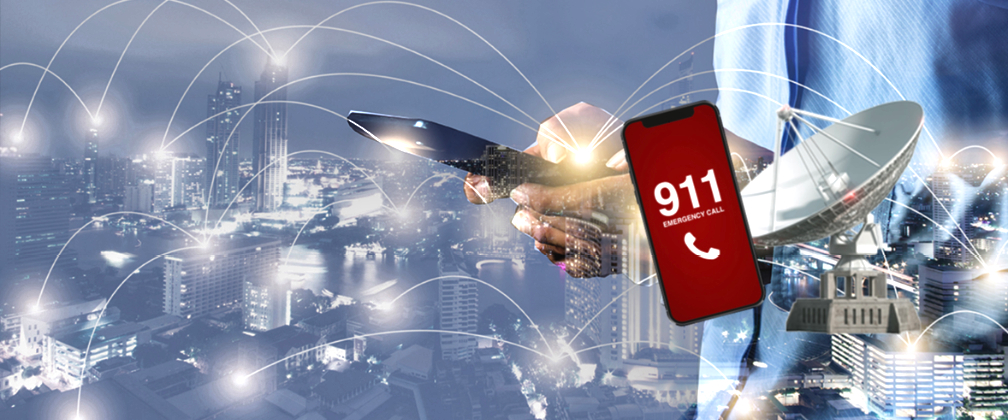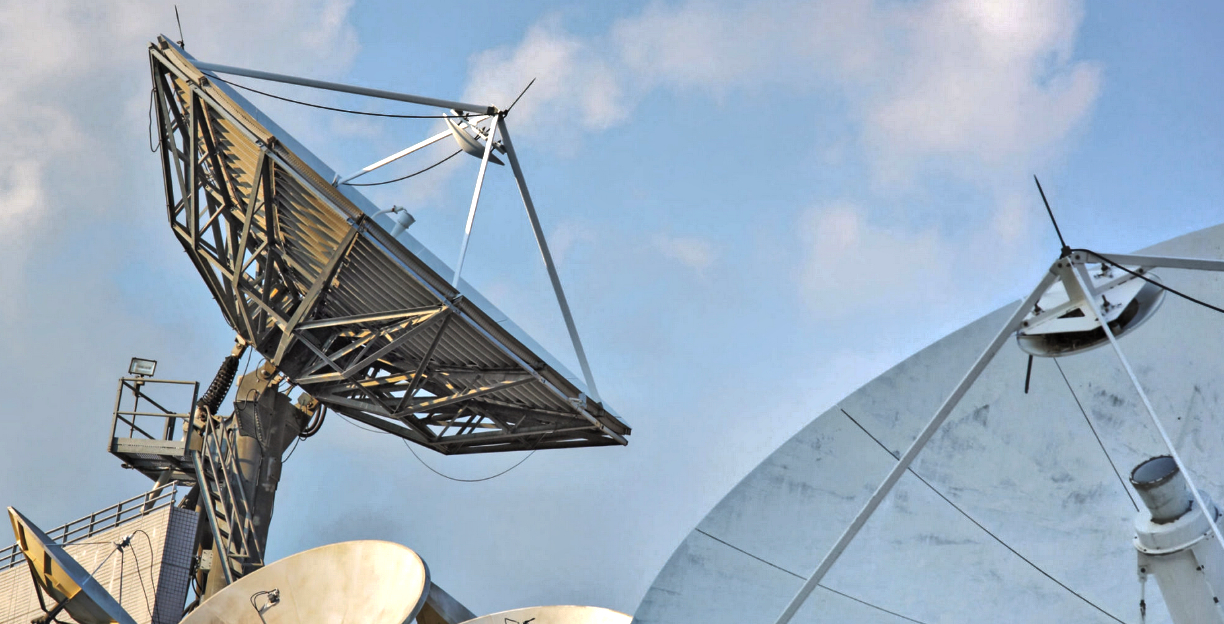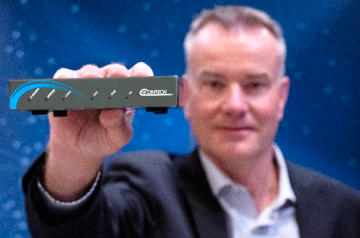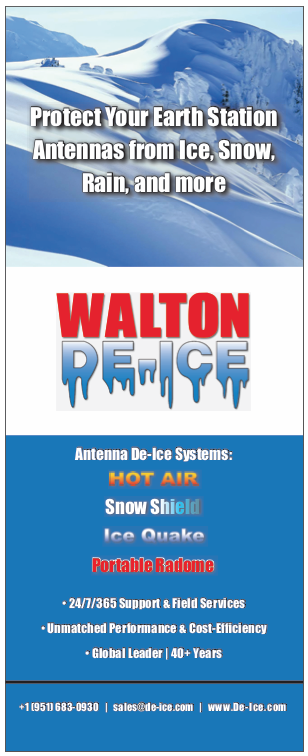Hurricane Ian delivered a catastrophic storm surge to Florida’s Gulf Coast and tore across the state and up the east coast, flooding and devastating coastal and inland cities and knocking out power and critical communications to millions, including first responders carrying out critical public safety missions.

Many metropolitan fire, police, EMS, and other public safety organizations rely on communications infrastructure that was underwater in the wake of the giant storm, in some cases impacting mission critical links rescue crews must have to receive and respond to calls for help.

John Heifner
“Network operators frequently make decisions that overestimate the resiliency of terrestrial based connectivity. The realities of these decisions are typically discovered during the most critical hours immediately after a major incident disrupts those terrestrial connectivity solutions,” said John Heifner, Orbital Data Networks (ODN) Senior Vice President of Engineering, who has seen firsthand how floods and high winds can take out generators powering stations and terrestrial communications systems.
Ian’s sheer power reminded Heifner of the powerful Hurricane Katrina that hit 17 years ago, where ODN saw the vulnerability of critical public safety land mobile radio networks.
Until Katrina, Heifner and ODN didn’t see a lot of collaborative comms platforms being shared across agencies, especially involving mission-critical land mobile radio (LMR) communications systems.
Most police, EMS, fire, and 911 dispatch systems across the United States use LMR. They may also use cell phones at times, but day-to-day communications among first responders is on state and federal LMR networks.
Hurricane Katrina decimated the terrestrial backhaul systems that enabled dispatchers at central command centers to use their LMR networks to notify and send remote crews to emergency scenes.
“Without any operational backhaul in place, the LMR systems were down all over the place just when they were needed most in the immediate aftermath of Katrina,” Heifner recalled. “We saw the problem and quickly engineered a resilient solution that blends together multiple communications platforms with satellite as a foundational resiliency link.”
The Correct Blend of Connectivity
Since Katrina, ODN has established more than 500 resilient first responder network sites around the U.S. together with Comtech — each company offering a unique blend of connectivity tailored to LMR backhaul.
“We come in with a highly flexible, robust foundational and primary VSAT link and layer other links on top, whether it’s microwave, T1 fiber, or cellular. By blending all of these together, we have an inherently secure, affordable, and resilient network that first responders can count on in all kinds of weather and disasters,” Heifner explained. “We rely very heavily on the adaptable, satellite-based and software-defined UHP platform from Comtech to allow our first responder customers to leverage multiple comms links and topologies in a wide range of connectivity scenarios.”
Comtech’s versatile Universal Hardware Platform (UHP) can be tailored to the mission being served — with point-to-point, point-to-multipoint, star, and mesh VSAT architectures that enable ODN to create multiple redundant paths with a single telecommunications asset.
There is no single point of failure with multi-link UHP technology, which allows users to easily switch between terrestrial and VSAT backhaul links using a single platform.

“First responders can use the cost-effective star architecture with a terrestrial backhaul component for day-to-day operations,” Heifner noted. However, when a natural disaster or network disruption strikes the terrestrial link, “Comtech’s UHP solution seamlessly switches to the point-to-point VSAT mesh topology for robust satellite-based backhaul. The solution offers the lowest total cost of ownership, beating terrestrial alternatives on price, security and convenience hands down.”

Richard Swardh
“Comtech’s UHP solution offers first responders the best of both worlds,” said Richard Swardh, Comtech’s Senior Vice President, Premium Enterprise & Mobile Operators. “The single device provides terrestrial- delivered land mobile radio communications when things are running smoothly, and LMR backhaul via satellites in space, which are free and clear of any operational threats when disaster strikes.”
Satellite’s Resilient + Ubiquitous Reach

First responder LMR networks are deployed with more consideration of geographical coverage than cellular networks, in many cases. A challenging side effect is they require sites in extremely remote, rural areas with limited connectivity options. Terrestrial build outs are extraordinarily expensive and in many cases, terrestrial fiber isn’t available at all.
The unmatched reach of satellite combined with the versatility of the multi- path UHP platform, coupled with ODNs adaptive SD-WAN solution tailored for LMR applications, provides first responders with a dedicated VSAT backed LMR network that is highly resistant to terrestrial based service interruptions.

Mark Littlejohn
“It’s a clear advantage of VSAT networks – you can have your own private VSAT network,” said Mark Littlejohn, Comtech’s Vice President of Strategic Accounts. “VSAT networks don’t have to be contended networks, or they can be contended with your own sites.”
Once the first site is engineered, implemented and deployed, each additional site is easily stood up.
“That is one of the many key benefits of satellite – the repetition and duplication is simplified,” added Swardh.
“Unlike microwave or fiber that require a lot of implementation work at each site, the VSAT platform just needs to see the sky. You point to the satellite, hit receive synch and you’re on the network – a satellite network that is available anytime and provides a consistent and cohesive service.”
“ODN teamed up with Comtech for its UHP technology and network expertise,” said Heifner, pointing to the ability to customize mission-specific solutions for a broad range of first responders. “UHP enables us to tailor per-site, per-user capabilities, which makes it easier for NOC, support and management teams to leverage the adaptability of their VSAT-delivered LMRs on the fly while other platforms are simply too rigid to meet those individual needs and requirements.”

“Satellite provides first responders an affordable and secure mission-critical advantage in the face of storms or disasters of any kind,” said Comtech’s Swardh. “Terrestrial facilities will fail in catastrophic storms like Ian and Katrina, while satellite is an absolute must-have platform and resilient tool when disaster strikes.”


